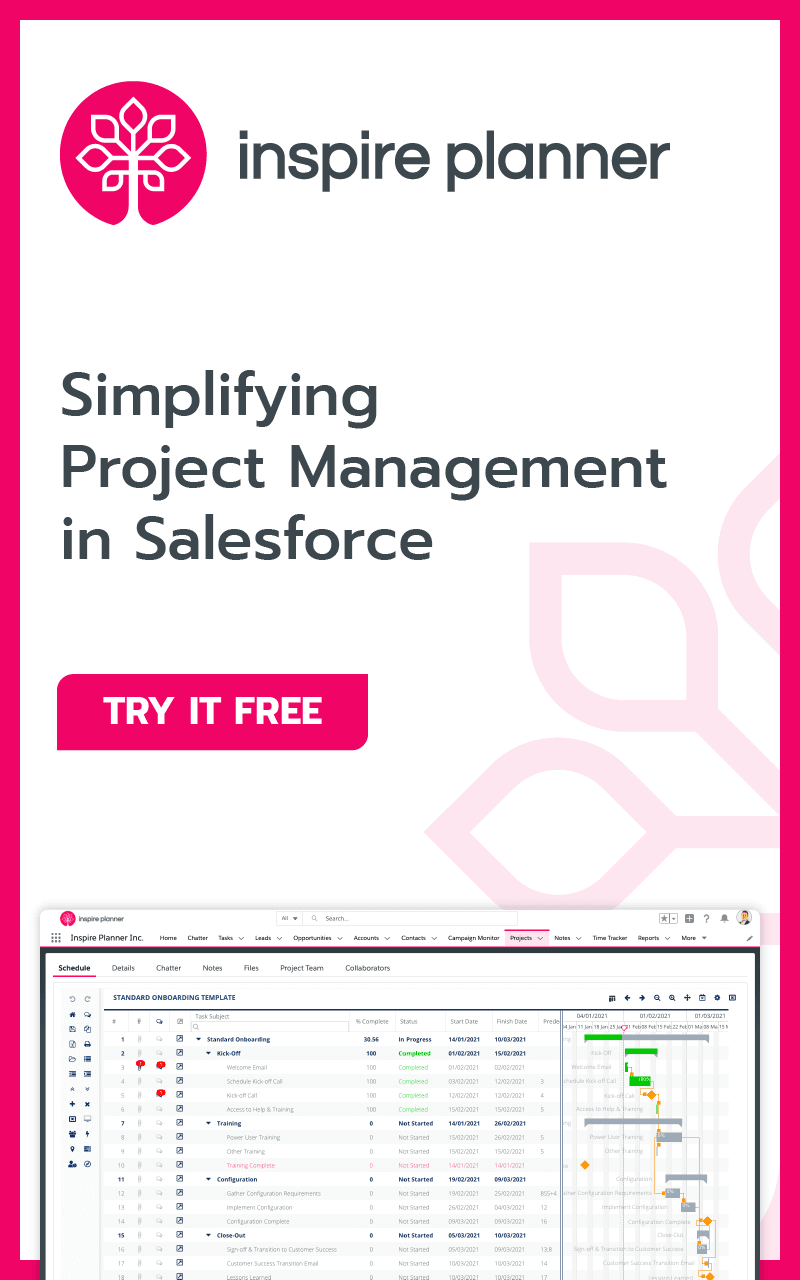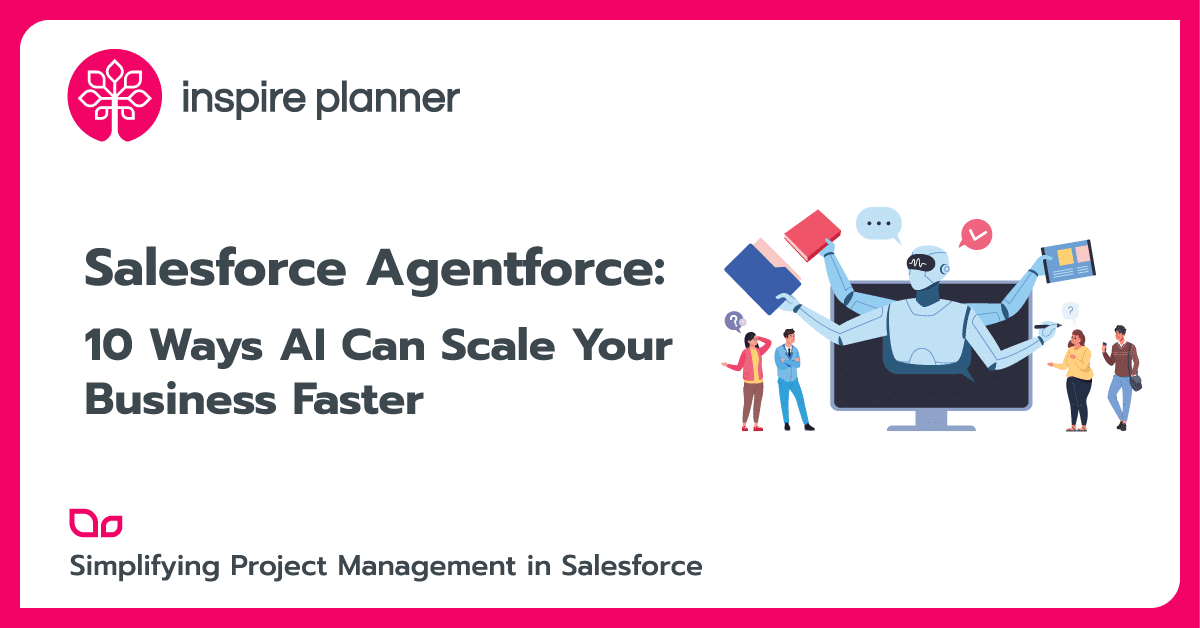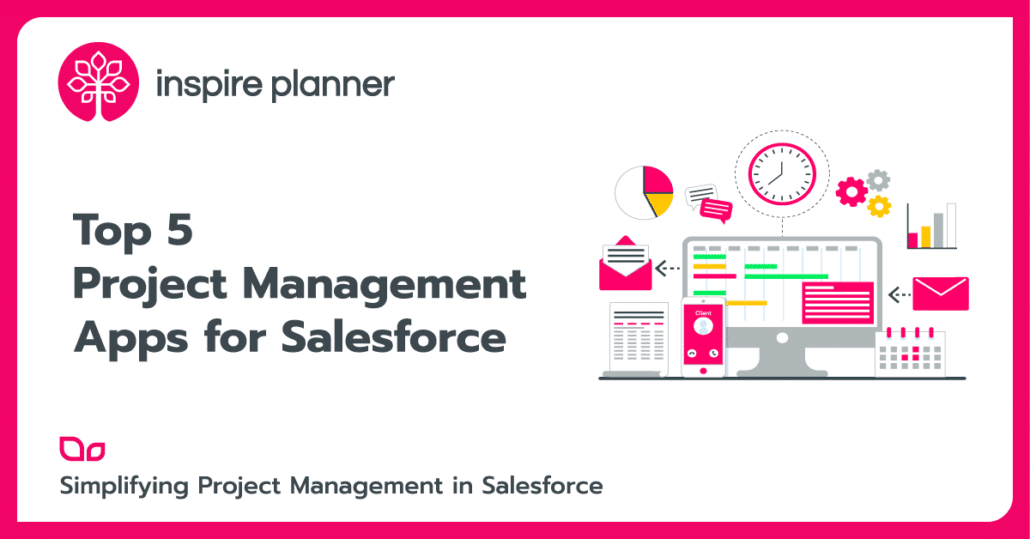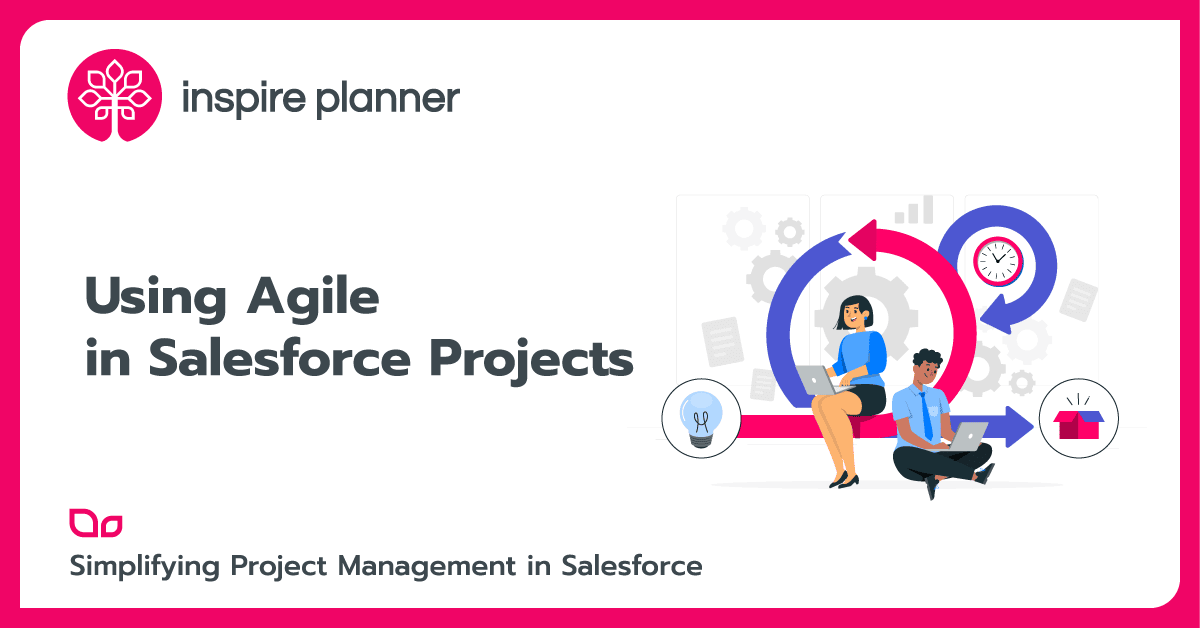
Traditional project management approaches often need help with the vibrant nature of Salesforce implementations. These conventional approaches, while structured, can lead to miscommunication, missed deadlines, and escalating costs due to their inflexibility. Luckily, you can use Agile in Salesforce projects to improve your project delivery process.
CRM projects can be extremely complex and they have a significant failure rate. Based on different sources doing research on CRM projects, between 20 to 70% of such projects fail. The lack of cross-functional coordination was often cited as the most significant risk factor for CRM project failure. Imagine the frustration of investing time and resources into a Salesforce project only to see it derailed by inflexible management strategies.
The Agile methodology offers a way out. In comparison, a mere 9% of Agile projects end in failure. Designed for adaptability and collaboration, Agile in Salesforce projects keeps them aligned with business objectives through the iterative approach.
In this article, you’ll discover how Agile in Salesforce projects ensures that they stay on track, stakeholders are continuously engaged, and the outcome resonates with the envisioned objectives.
Waterfall vs. Agile Project Management Methodology – Quick Overview
Waterfall is a traditional project management methodology that follows a linear and sequential approach. Projects using the Waterfall methodology progress through predefined phases, from requirement gathering to product deployment, and typically use the Gantt chart to display the schedule and the progress of the projects.

In contrast, Agile methodology is a collaborative approach to project management and software development that emphasizes flexibility, customer feedback, and rapid iteration. Instead of a linear progression, projects are broken down into small, manageable tasks called “sprints” or “iterations,” which are short, time-boxed periods.
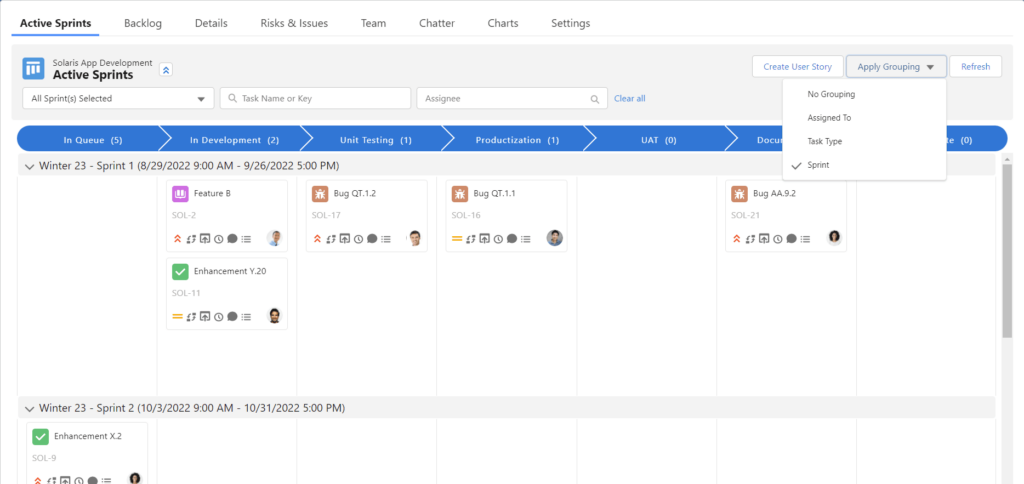
If different teams at your organization use both approaches for different projects, there are Salesforce native tools like Inspire Planner that can handle both Waterfall and Agile methodologies successfully.
Benefits of Using Agile in Salesforce Projects
Salesforce projects are complex and require a flexible and iterative approach to be successful. Agile methodology is well suited for this type of projects and offers several benefits that can help streamline the process.
- Speed: With Agile in Salesforce, projects are divided into short sprint phases, each resulting in a tangible outcome or a part of the final product. This modular approach accelerates the development process, ensuring faster delivery than traditional methods, where the entire project is tackled as one enormous task. About 6.2% opt for one-week sprints, keeping their cycles short and dynamic, while most of the teams (59.1%) prefer 2-week sprints.
- Flexibility: Agile allows teams to incorporate these changes seamlessly into the ongoing project as business process needs evolve or new requirements emerge. This ensures the final product always aligns with current business objectives and user needs. The flexibility of agile makes it 37% faster and 16% more productive than the conventional project development model.
- Client Involvement: Agile emphasizes collaboration and open communication. Clients or stakeholders are involved throughout the development process, providing regular feedback after each sprint. This continuous involvement ensures the product is being developed per their expectations, reducing the chances of last-minute surprises or significant overhauls. Changes can be made immediately if there are any obstacles or defects along the way, making Agile an ideal model for many teams across various industries.
- Predictable Schedule and Cost: The nature of Agile, combined with its emphasis on planning and regular reviews, makes it easier to estimate timelines and budgets. Each sprint has a defined duration and scope, allowing teams to predict project costs and delivery dates better. Sprints typically last between one to four weeks, allowing teams to deliver new features quickly and with a high predictability source.
How Agile in Salesforce Enhances Project Management
The true potential of Salesforce can only be unlocked when paired with an adaptive project management approach. Here’s how Agile amplifies the efficacy of Salesforce project delivery:
- Iterative Development and Feedback: Agile places it at the forefront, unlike traditional models, where feedback is often an afterthought. Agile in Salesforce allows quick adaptations based on stakeholder feedback by breaking the project into smaller, manageable sprints. According to a Project Management Institute survey, 71% of companies adopt Agile, highlighting its widespread acceptance and effectiveness.
- Collaboration and Communication: Agile is not just a methodology; it’s a culture. It improves an environment of open communication, ensuring all team members, from developers to stakeholders, are on the same page. This enhanced collaboration ensures that the Salesforce implementation is holistic, catering to all facets of the business. Building a strong agile culture in your organization can increase commercial performance by 237%.
- Transparency: One of the standout features of Agile is its emphasis on visibility. Tools like Kanban boards and burndown charts offer stakeholders a real-time view of the project’s progress. This transparency ensures accountability and allows for timely interventions if the project is veering off course. Agile in Salesforce can improve project transparency by 40%.
- Risk Management: Risks are inevitable in the busy world of Salesforce implementations. However, with its iterative approach, Agile allows for early identification of potential pitfalls. By addressing issues head-on, Agile in Salesforce ensures that risks are identified and mitigated promptly. 31% of companies have adopted Agile for lowering risks.
- Continuous Improvement: Complacency has no place in Agile. After each sprint, teams engage in retrospectives, analyzing what went well and what didn’t. These insights pave the way for process optimization, ensuring the team evolves and improves. According to Hexacta, embracing a mindset of continuous improvement in Agile development helps improve team productivity and improves innovation.
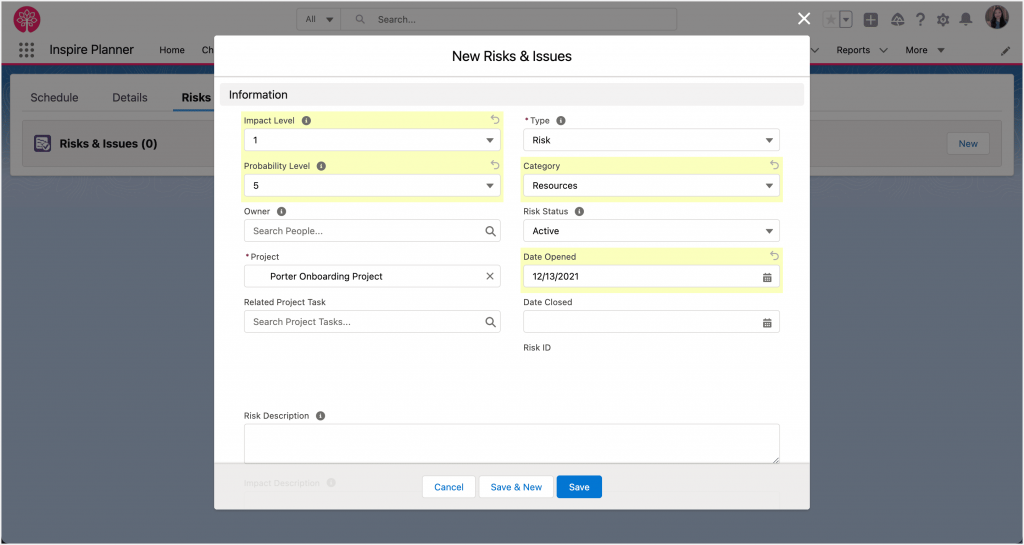
Implementing Agile in Salesforce Projects
Integrating Agile methodologies within Salesforce projects can be a game-changer for CRM implementations. Here is a 4-step guide to seamlessly infuse Agile into your Salesforce endeavors:
Setting up Teams for Agile in Salesforce
The foundation of any successful Agile project lies in its team. For Salesforce projects, there are members responsible for specific tasks.
- Product Owner: The product owner sets the project vision, prioritizes tasks, and aligns the team with business objectives.
- Scrum Master: Acting as a facilitator, the Scrum Master ensures that the Agile processes are followed, addresses any impediments the team might face, and fosters a collaborative environment.
- Development Team: Comprising of Salesforce developers, architects, and other specialists, this group is responsible for the actual implementation, ensuring that each sprint delivers tangible results.
Tools and Platforms
Salesforce users can find several native project management tools to aid Agile implementation. Tools like Inspire Planner can be invaluable, offering features that align with Agile principles, like:
- Backlog
- Kanban boards
- Sprint planning
- Time Tracking
- Resource Management
- Agile Reporting, and Dashboards
Inspire Planner is a 100% Salesforce native project management app that fully supports Agile in Salesforce out of the box, and it is highly rated by its customers with over 140 5-star reviews on AppExchange. With this tool, you can easily manage product backlogs, plan sprints, track story points, visualize work using Kanban boards, manage resources, and analyze progress with burndown charts.
Since Inspire Planner lives inside your Salesforce org, you can directly link your user stories or tasks to any Salesforce record like Opportunities, Cases, and Accounts, including records from your custom objects.
Furthermore, Inspire Planner also offers advanced yet intuitive Waterfall project management functionality too. By combining Waterfall and Agile methodologies under one package with one subscription cost, Inspire Planner is the app for all your project management needs In Salesforce.
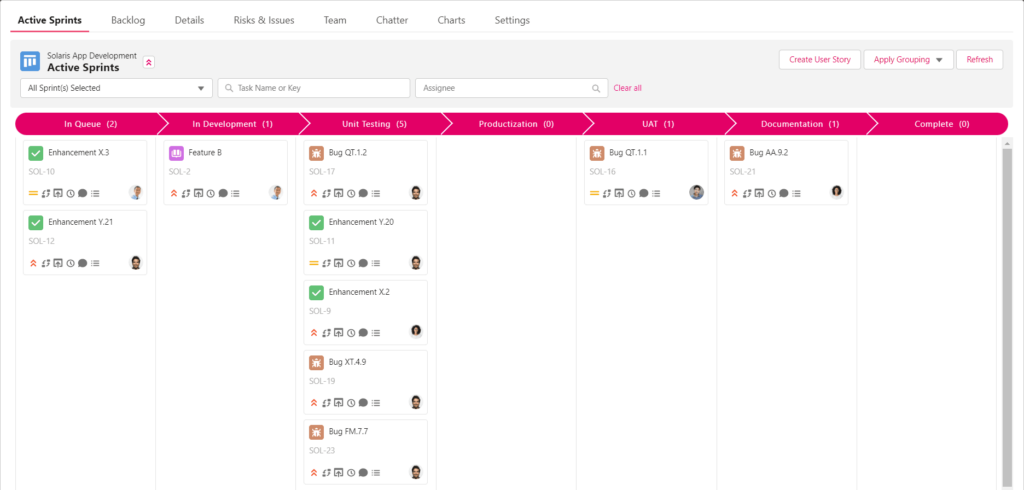
Sprint Planning, Daily Stand-ups, and Sprint Reviews
In the context of Salesforce, these Agile ceremonies are important for your project management process:
- Sprint Planning: Given Salesforce’s vast capabilities, defining clear goals for each sprint is crucial, ensuring the team’s efforts are directed towards high-priority tasks.
- Daily Stand-ups: These brief meetings allow the team to discuss progress, address roadblocks, and ensure the Salesforce implementation remains on track.
- Sprint Reviews: After each sprint, it’s essential to review the work done, gather feedback, and ensure that the implemented Salesforce functionalities align with business needs.
Adapting Ceremonies for Challenges Related to Agile in Salesforce
Every platform has unique challenges, and Salesforce is no exception. Agile ceremonies might need slight adaptations. It can be related to specific Salesforce customizations, integrations with non-native apps, or managing Salesforce’s regular release cycles.
For instance, sprint durations might vary based on Salesforce’s release cycles, or retrospectives might include discussions on Salesforce-specific tools and best practices.
Best Practices for Introducing Agile in Salesforce
Merging the world of Agile methodologies with Salesforce implementations can unlock unparalleled efficiencies and outcomes. However, certain best practices must be ingrained to fully utilize this synergy’s potential.
Here are some of the best practices you can try:
Training and Upskilling Teams in Agile Practices
Before diving into the Agile waters, it’s imperative that the team is well-equipped to swim. This means investing in comprehensive training sessions that introduce team members to the core principles of Agile.
Whether it’s understanding the significance of sprints, the role of a Scrum Master, or the nuances of retrospectives, a well-trained team can easily navigate the challenges of Salesforce implementations. Moreover, periodic upskilling sessions can ensure the team stays updated with the latest Agile methodologies and Agile apps for Salesforce.
Ensuring Clear Communication Channels Between Salesforce Experts and Agile Practitioners
Clear communication is the bridge that connects both Agile and Salesforce worlds. With their deep platform knowledge, Salesforce experts must constantly dialogue with Agile practitioners who bring methodology expertise.
This ensures that the Agile processes are tailored to the unique demands of Salesforce. Regular meetings, frequent feedback sessions, and open communication channels can prevent misalignments and ensure the project remains on track.
Regularly Reviewing and Adapting the Agile Process to Suit the Salesforce Environment
As Salesforce projects progress, it’s crucial to review and refine the Agile processes continuously. This could mean adjusting sprint durations to align with Salesforce release cycles, incorporating Salesforce-specific tools into the Agile toolkit, or even tweaking the team structure to suit the project’s demands better.
Regular retrospectives can offer insights into areas of improvement, ensuring that the Agile process remains optimized for the Salesforce environment.
Potential Challenges of Agile in Salesforce and Solutions
Combining Agile methodologies with Salesforce implementations, while promising, is challenging. However, these challenges can be effectively addressed with foresight and strategic planning.
Here are some of the potential hurdles and how to overcome them:
Resistance to Change from Traditional Methodologies
- Challenge: Teams accustomed to traditional project management methodologies might find the shift to Agile daunting. The fear of the unknown and the comfort of familiar processes can lead to resistance.
- Solution: Change management is key. Begin with awareness sessions highlighting Agile’s benefits, especially in the context of Salesforce implementations. Hands-on workshops, success stories, and pilot projects can help teams transition smoothly. Having change champions within the team can drive positive sentiment and encourage adoption.
Aligning Agile Sprints with Salesforce Release Cycles
- Challenge: Salesforce’s release cycles might sometimes align with the Agile sprints. This can lead to synchronization issues, where new Salesforce features might be released mid-sprint.
- Solution: Strategic planning is essential. Teams should be aware of Salesforce’s release calendar and plan their sprints accordingly. If a Salesforce release is anticipated during a sprint, provisions should be made to accommodate it. This might mean shorter sprints or aligning specific sprints around Salesforce releases to explore and integrate new features.
Ensuring Quality in Rapid Development Cycles
- Challenge: The iterative nature of Agile means rapid development cycles. While this ensures faster delivery, it can sometimes compromise on quality, especially when trying to leverage the vast capabilities of Salesforce.
- Solution: Quality assurance should be integrated into every sprint. Automated testing tools, continuous integration, and regular code reviews can ensure that the quality is not compromised. Additionally, dedicating specific sprints or portions of sprints to quality checks, especially after major Salesforce customizations, can ensure a robust final product.
Final Thoughts
The fusion of Agile methodologies with Salesforce project delivery heralds a new era in CRM implementations. This synergy promises both efficiency and a level of adaptability and responsiveness that traditional methodologies often lack.
We see a testament to this transformative potential when we reflect on tools like Inspire Planner.
- It encapsulates the essence of Agile within the Salesforce ecosystem
- Ensures projects are completed and genuinely resonate with business objectives
Embracing Agile for Salesforce implementations is not just a recommendation but a strategic imperative. As the industry continues to evolve, the ability to adapt and iterate rapidly will define success.
By integrating Agile in Salesforce projects, organizations can ensure they keep pace with this evolution and improve collaboration. The future beckons, and it is Agile.

